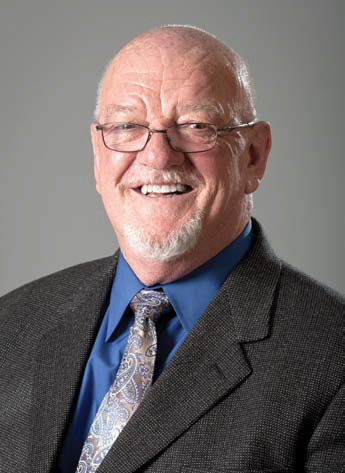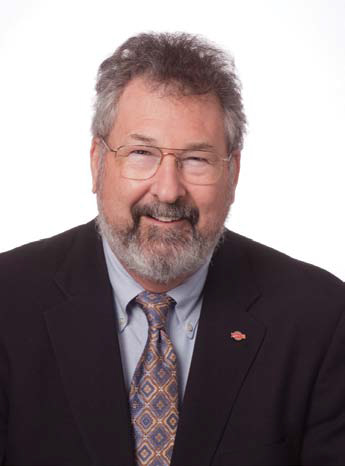Taking Stock of CALM
NEW YORK—Nearly a year after the passage of the Commercial Advertisement Loudness Mitigation Act—aka the CALM Act—TV ads generally are less jarringly loud.
The law, which was adopted in December 2011 and took effect last December, was aimed to prevent TV commercial audio from being broadcast at louder volumes than the accompanying TV programs. It further required broadcasters and multichannel video programming distributors to implement “Techniques for Establishing and Maintaining Audio Loudness for Digital Television,” which was based on ATSC Recommended Practice A/85.
In the year since, the FCC has granted more than 150 waivers for TV stations, cable operators and other MVPDs that could prove financial hardship. According to the FCC’s latest update, as of June, it had received nearly 16,000 complaints but had not issued any fines. “The vast majority of end users in the U.S. have satisfied their loudness processing needs and are in compliance with the CALM Act,” said Chris Shaw, executive vice president of sales and marketing at Cobalt Digital in Urbana, Ill. “There is still some concern, however, regarding how the FCC will address stations that are in violation of the law.”
The FCC is “not looking to hand down fines just yet,” added Ralph Bachofen, vice president of sales and head of marketing for Triveni Digital in Princeton, N.J.
MINOR ADJUSTMENT
Nearly one year out most stations are reportedly compliant, but there are still some issues. At present, the CALM Act standards are still evolving. Late last month, the FCC issued a Further Notice of Proposed Rule-making that called for an “improved loudness measurement algorithm.” Dubbed ATSC A/85:2013, this “Successor RP” has updated the loudness measurement algorithm to conform with the latest version of the International Telecommunication Union’s BS.1770 measurement algorithm, BS.1770-3.

Chris Shaw, executive vice president of sales and marketing at Cobalt Digital For those stations that already sought to comply with the original ATSC A/85 RP, this Successor RP may necessitate some software or device upgrades. This should be a minor adjustment as the industry has been trying to adhere to the CALM Act.
In June of this year, Mignon L. Clyburn, acting chairwoman of the FCC noted in a letter to CALM Act’s sponsor as a bill Rep. Anna G. Eshoo (D-Calif.) that implementation of the bill “prompted a large wave of complaints, which has subsided significantly.”
Get the TV Tech Newsletter
The professional video industry's #1 source for news, trends and product and tech information. Sign up below.
“When the CALM Act took effect, consumers expected relief from excessively loud TV ads, and it was about time. Television viewers had complained for decades about the earsplitting volume of commercials,” said Eshoo, ranking member of the Communications and Technology Subcommittee and author of the CALM Act. “As the first anniversary of the CALM Act nears, Congress must keep the pedal to the metal to make sure that broadcasters, cable operators and other pay-TV providers are abiding by the law. It’s why I called for quarterly reports from the FCC starting earlier this year, and why I continue to monitor the status of the law.”
The FCC also reaffirmed its efforts are “ongoing” and that “as with any potential enforcement activities,” it refrains from “disclosing any information that could compromise” the work.
COMING UP WITH A STANDARD
Thus one of the biggest issues with ensuring compliance by broadcasters was that fact that loudness hadn’t really been monitored universally.
“We had the transition from analog to digital and this is when it was discovered that there really was no way of measuring overall loudness, as there had never been a way with analog,” said Pat Waddell, manager of standards and regulatory issues at Harmonic in San Jose, Calif. “Even with the transition, the networks didn’t choose the same point, and this is where CALM helped. Stations realized that the FCC was going to write them a ‘parking ticket’ if they didn’t address the issue.”

Pat Waddell, manager of standards and regulatory issues at Harmonic “That is a seachange for the broadcasts. In the past audio was sent through a limiter, which often took the life out of the signal,” Waddell added. “That has been a real benefit of CALM. People are paying much more attention to the audio and it has improved considerably.”
While the United States is very focused on CALM, the loudness issue has in fact been one that is worldwide.
“Loudness standards are now global, with the exception of Asia and Africa,” said Jon Schorah, audio creative director at Nugen Audio, a U.K.-based provider of professional audio tools. “There are various names for what it is called, but they are all essentially the same and based on ITU-R BS. 1770. There are some small differences in the interpretation but this does not really result in any notable differences in what the consumer perceives.”
However, there is the question by some as to whether the United States has really gone far enough.
“Inside the United States the networks are generally compliant,” said Andrew Sachs, senior director of marketing at Volicon, a Burlington, Mass.-based developer of content monitoring and logging technology. “This is because these guys all have various practices as to how to get content in and leveled correct and put into the chain. The industry, at least in the United States, has declared victory in compliance, but if you look at the way the Europeans look at the measurements they contend that it is still being abused.”
Still thanks to this standard, viewers may experience much better audio. Loudness monitoring is also taking much of the guess work out of the equation.
“When the standards first came in, they were trying to retroactively comply to the average loudness,” Nugen’s Schorah said. “But this was really about just squashing down the dynamic range. In theory you should be able to have a wider dynamic range as the average is on target. You will then get much better audio quality, instead of having a machine try to ‘guess’ and solve any problems in post-production.”
LOUDNESS MONITORING
A number of products are now being used to help ensure that TV broadcasters are in fact compliant.
“Our AMP2 series, which came out last summer, was very much based on user feedback,” said John D. Terrey, vice president of sales at Wohler in San Francisco. “The Wolher AMP2-E16V-M allows users to determine which standard they want to address. We recently enhanced our loudness monitoring in this unit and it allows users to look at any selection of channels, stereo, surround and even Dolby.”
To this end the AMP2 is as much a production as well as post-production product.
“In production you can look at the levels as you are recording,” Terrey said. “In post you can look at the stereo mix, while with a two button press you can look at the Dolby levels. It provides a quick glance view for highs, lows and even allow users to see it in a histogram.”
Linear Acoustic, part of the Telos Group, offers loudness monitor options that provide metering and monitoring built into the processors.
“The LQ1 is a replacement for the venerable Dolby LM100 that had been around for a long time,” said Mike Richardson, director of products at Linear Acoustic in Lancaster, Pa. “A year and a half ago, they had gotten out of the hardware businesses and we were one of the partners that was able to jump in.”
The company was also quite busy as a result of the CALM Act, Richardson said. “Clients wanted to make sure they bought the right thing, and we don’t want to just sell a processor but we want to make sure they are using it correctly.”
Volicon updated its measurements in the spring to the ATSC A/85 standards. “Our history is really confined to logging,” Sachs said. “This is the realm we’ve always dealt in but this adds another layer to it.”
Cobalt Digital is also trying to ensure that users are are compliant.
“This is why we developed SpotCheck,” Shaw said. “There is an argument that proof is only necessary if a facility’s compliance with the law is in question, but we have found an increasing number of broadcast groups would like to monitor, graph, log, download and archive that data for future reference.
“We started to work on SpotCheck several months ago when we recognized the need for proof of compliance records. SpotCheck measures and logs loudness for all programs emanating from a facility, and can record and log any session over varying periods of time.”
